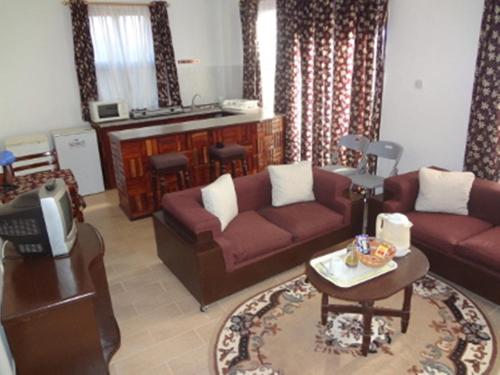About
Location :
Opening Hours
- Monday 7:00 AM – 6:00 PM
- Tuesday 7:00 AM – 6:00 PM
- Wednesday 7:00 AM – 6:00 PM
- Thursday 7:00 AM – 6:00 PM
- Friday 7:00 AM – 6:00 PM
- Saturday 7:00 AM – 6:00 PM
- Sunday Closed
5 Reviews
-
22 February 2018
In interesting museum of a museum. Most of the exhibits seem to be dug out of closets, glued to the wall in the 1970s and barely dusted since then.
It is amazing in all the interesting little details. The text is incisive with snippets like "Senegambians consider the Fulbe women to be some of the most beautiful women in West Africa"
It covers a lot of subjects and eras from prehistoric to post-colonial. With a room devoted to musical instruments, enviroment, and a few other random subjects. -
25 December 2017
Ignore banjul itself but this museum is very good. Small but gives a good insight into the peoples and cultures of gambia. Would def recommend
-
15 May 2017
The national museum in Banjul displays different historic artifacts in The Gambia. Mostly visited by tourist.
-
10 October 2016
A really nice place to go on for a school field trip! I just went and it was amazing! Lots of history! The building was a little bit run down though.
-
18 March 2014
The National Museum of The Gambia in the capital of Banjul is a reliquary of national identity. The building offers three floors of exhibits ranging from costumes, tools, musical instruments, photos and paintings, replicas and dioramas.They depict the complex history of the Gambian people.
The slave trade that served the European colonial rule is represented through artifacts and representations of slavery. The trade routes taken across the Sahara, along the the Gambia River and the West coast of Africa infused the region with a rich tradition of diversity. This includes the practice of local rule in villages through Chieftancy governance, ceremonies, colorful fabrics and fashions, arts and crafts, music, song and dance, architecture, religion and medicine. Many of these influences can still be seen today in the manner of dress, contemporary arts, and multi-cultural events.
The museum is home to a vast selection of recorded oral histories of the tribes who settled and traded in the region. These tell of origins of tribes and their heritage of music, dance and story telling. Efforts to transcribe these recordings are an ongoing process, in order to establish a database for research.


